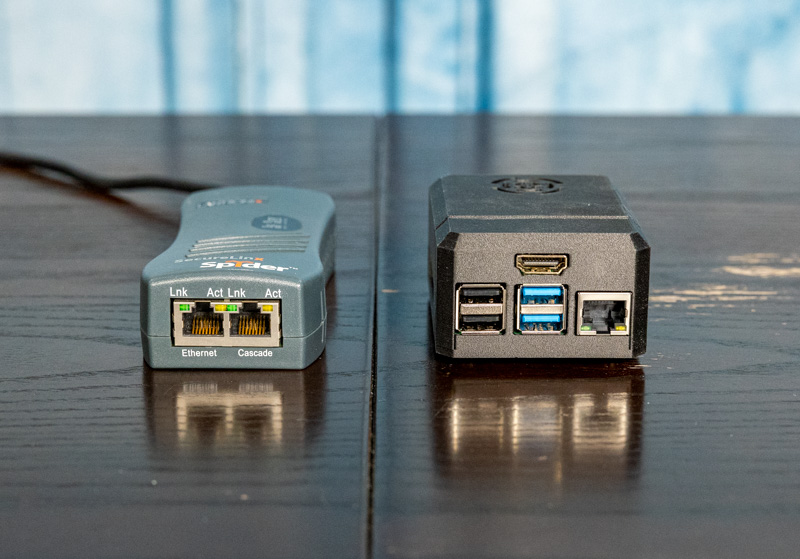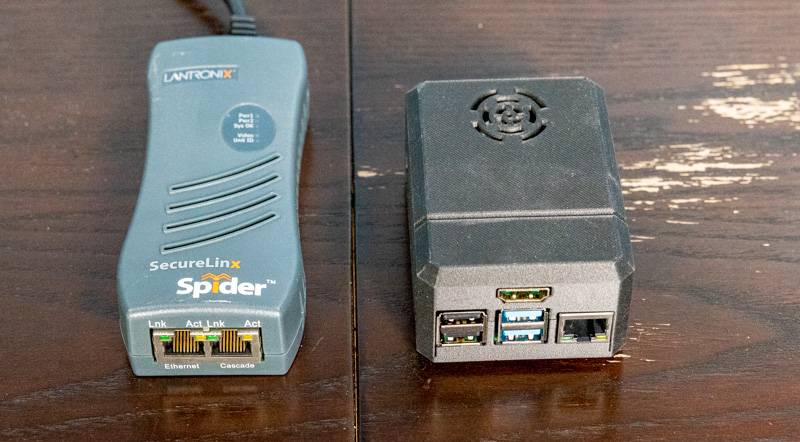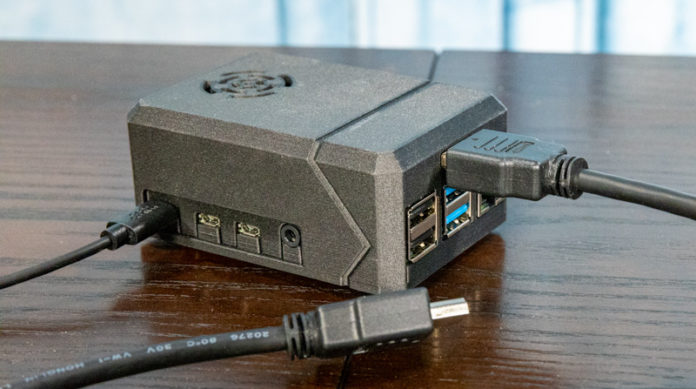Today we are going to review the TinyPilot Voyager KVM. This is a pre-packaged, Raspberry Pi 4-based solution that allows for remote KVM functionality to be added to devices. Since it is based on a Raspberry Pi, there is a lot of extra customization that is possible. This solution is one that we have been using for around six months in preparation for this review, but a bit of context is in order both on the market and why it took us this long to publish our review.
Video Version
Since this is a product we have used for a long time, and it is a direct comparison to another product we have used for a better part of a decade, we have an accompanying video that includes the most outrageous intro we have done (I snuck it in after the editor was done and before uploading):
As always, we suggest opening the video in a YouTube tab/ browser. There are a few more screen captures when we get to the software section that may be useful to our readers as well.
The Context
Several months ago we encountered a problem at STH. The old Lantronix Spiders we used to troubleshoot/ set up machines had invalid certificates and we could not launch their Java-based KVM-over-IP functionality. The Lantronix Spider is the grey box one sees in countless colocation facilities as it can be used to provide remote KVM and media functionality (as well as a serial interface) to almost any device. They have been in the field since PS/2 was common (USB version shown below) and are effectively the gold standard widely deployed single node remote KVM solution.

Traditional rack KVMs have had a challenging time as servers transition to virtually all having onboard Baseboard Management Controller or BMCs these days. Still, in colocation, there are customers that are using networking gear without BMCs for security reasons or workstation hardware and that is a big reason we still see Spiders in facilities today.

In the fall of 2020, a reader approached us asking if we would review a new Raspberry Pi-based solution. Although he offered to send a sample, we declined but said we would purchase a unit to support the effort but only review the unit under one condition: remote media. There have been some other reviews online around the TinyPilot KVM solution, but to us, this solution was not complete enough to replace the older Lantronix units without remote media support. This week, we received word that the feature is in the product, so it is now time for our review.
Next, we are going to look at the hardware, followed by the software, and our final words.





Too much complicated stuff to substitute a simple serial port.
This is a very interesting solution for IP-based OOB remote management for CoLoc/Start-up/SOHO/Home/DIY for servers or systems without BMC/IPIMI. I did not know about the TinyPilot Voyager. Great review Patrick, you made my Saturday :-) TYVM.
As @domih stated, “I did not know about the TinyPilot Voyager”, I have to say likewise…. 25+ years and I too didn’t realize this was out in the field… Great info and review. As always! Thanks for all your hard work.
A similar project at pikvm org
Indeed. pikvm lacks available hardware, but they’re working on that.
But it also supports connecting up to the ATX header for power/reset.
https://forums.servethehome.com/index.php?threads/pikvm-an-open-source-ip-kvm-project-using-the-raspberry-pi.31004/
Pikvm is in a different class compared to this. It has a mature and well designed code base, no features behind paywalls, and handles all kinds of hardware quirks. It also offers options for power cycling the controlled device, along with vnc support too.
i wondering how do perform power down and reset thought this unit ?! i mean it’s basically function as VNC (without bios part)
@Tony: Read the Website.
Does either project have plans for cellular modem support?
I put my pi in a pic slot with poe and a usb c to internal header, also using pikvm.
Not obviously present in the article, at least to me, though it might be buried somewhere or in a link: What is the cost of this TinyPilot gizmo with the gee-wiz 3D printed case (cuz that is all the rage for NerdZ)?
It was funny to read the Lantronix Spider KVM review by STH where they commented about saving $100 on the Dell iKVM feature via the Dell iDRAC thingie…by spending $280 on the Lantronix Spider. LOL LOL LOL LOL
Sleepy there is pricing as well as a screenshot of current pricing/ offerings just before the Final Words.
Couldn’t they put the data/power splitter inside the case in some way? That would significantly reduce the cable nest.
This could also work in the SMB space where KVM’s may already exist but they are java-based or local only. Replace the local console with tinypilot to modernize old hardware.
I have an inexpensive TRENDnet 8-port VGA/USB KVM switch (TR-803R) that I can switch between the 8 ports using keyboard shortcuts.
Does anyone know if I can hook the monitor/keyboard output of this TRENDnet switch to the TinyPilot Voyager for remote console access to the eight computers connected to the TRENDnet switch?
This project seems to be a less technical version of PiKVM.org
Judging by your thoughts on this product, you should try Pi-KVM out. They are on the verge of releasing dedicated hardware HAT.
Already in-touch with the Pi-KVM folks. Please also remember TinyPilot has been out for 2-3 quarters so this is a review of hardware that has been running for 6+ months while Pi-KVM hardware is still not out (and sounds like it will be in tight supply when it first arrives.)
Noted! I was unaware. I am looking forward to hearing your thoughts on PiKVM, with or without the dedicated HAT.
Only 299$ for a Pi4 (35$) + Extra chip and a custom case ( few dollars at best )… Am i missing something?
Benny I think you’re missing the time to put it together, research the right parts, the power splitter, the adapters, the SD card, the cables and so forth. I don’t think anyone is saying there isn’t margin. I think you’re paying for convenience.